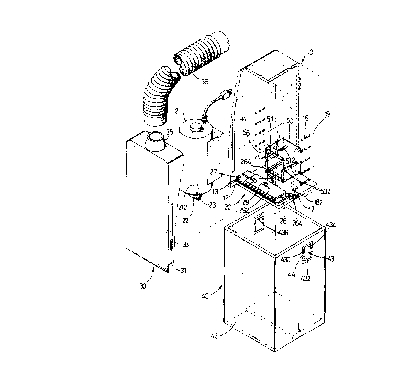Une partie des informations de ce site Web a été fournie par des sources externes. Le gouvernement du Canada n'assume aucune responsabilité concernant la précision, l'actualité ou la fiabilité des informations fournies par les sources externes. Les utilisateurs qui désirent employer cette information devraient consulter directement la source des informations. Le contenu fourni par les sources externes n'est pas assujetti aux exigences sur les langues officielles, la protection des renseignements personnels et l'accessibilité.
L'apparition de différences dans le texte et l'image des Revendications et de l'Abrégé dépend du moment auquel le document est publié. Les textes des Revendications et de l'Abrégé sont affichés :
| (12) Brevet: | (11) CA 2187594 |
|---|---|
| (54) Titre français: | TONDEUSE A CHEVEUX |
| (54) Titre anglais: | HAIRCUTTING DEVICE |
| Statut: | Périmé et au-delà du délai pour l’annulation |
| (51) Classification internationale des brevets (CIB): |
|
|---|---|
| (72) Inventeurs : |
|
| (73) Titulaires : |
|
| (71) Demandeurs : |
|
| (74) Agent: | BULL, HOUSSER & TUPPER LLP |
| (74) Co-agent: | |
| (45) Délivré: | 1999-05-04 |
| (22) Date de dépôt: | 1996-10-10 |
| (41) Mise à la disponibilité du public: | 1998-04-10 |
| Requête d'examen: | 1996-10-10 |
| Licence disponible: | S.O. |
| Cédé au domaine public: | S.O. |
| (25) Langue des documents déposés: | Anglais |
| Traité de coopération en matière de brevets (PCT): | Non |
|---|
| (30) Données de priorité de la demande: | S.O. |
|---|
Appareil pour la coupe de cheveux comportant un boîtier avec une première ouverture à sa partie inférieure. Un corps est monté à l'intérieur du boîtier et présente une deuxième ouverture à sa partie inférieure, laquelle est en communication avec la première ouverture. Un mécanisme pour la coupe de cheveux est monté à la partie inférieure du corps, au-dessus de la deuxième ouverture. Un dispositif d'aspiration est monté à l'intérieur du boîtier, avec conduit d'aspiration à la partie inférieure du boîtier et au-dessus du mécanisme de coupe. Le conduit d'aspiration aspire l'air du boîtier à travers la première et la deuxième ouvertures.
A haircutting device includes a housing having a first
opening defined in an underside thereof. A body is
adjustably mounted in the housing and has a second opening
defined in an underside thereof and communicating with the
first opening. A haircutting mechanism is mounted on the
underside of the body and located above the second opening.
A suction member is mounted in the housing and includes a
suction vent defined in an underside thereof and located
above the haircutting mechanism. The suction member is
operated to draw air from the housing through the first and
second openings into the suction vent.
Note : Les revendications sont présentées dans la langue officielle dans laquelle elles ont été soumises.
Note : Les descriptions sont présentées dans la langue officielle dans laquelle elles ont été soumises.

2024-08-01 : Dans le cadre de la transition vers les Brevets de nouvelle génération (BNG), la base de données sur les brevets canadiens (BDBC) contient désormais un Historique d'événement plus détaillé, qui reproduit le Journal des événements de notre nouvelle solution interne.
Veuillez noter que les événements débutant par « Inactive : » se réfèrent à des événements qui ne sont plus utilisés dans notre nouvelle solution interne.
Pour une meilleure compréhension de l'état de la demande ou brevet qui figure sur cette page, la rubrique Mise en garde , et les descriptions de Brevet , Historique d'événement , Taxes périodiques et Historique des paiements devraient être consultées.
| Description | Date |
|---|---|
| Le délai pour l'annulation est expiré | 2001-10-10 |
| Lettre envoyée | 2000-10-10 |
| Accordé par délivrance | 1999-05-04 |
| Inactive : Taxe finale reçue | 1999-02-03 |
| Préoctroi | 1999-02-03 |
| Un avis d'acceptation est envoyé | 1998-10-09 |
| Un avis d'acceptation est envoyé | 1998-10-09 |
| Lettre envoyée | 1998-10-09 |
| Inactive : Renseign. sur l'état - Complets dès date d'ent. journ. | 1998-10-05 |
| Inactive : Dem. traitée sur TS dès date d'ent. journal | 1998-10-05 |
| Inactive : Approuvée aux fins d'acceptation (AFA) | 1998-09-10 |
| Demande publiée (accessible au public) | 1998-04-10 |
| Exigences pour une requête d'examen - jugée conforme | 1996-10-10 |
| Toutes les exigences pour l'examen - jugée conforme | 1996-10-10 |
Il n'y a pas d'historique d'abandonnement
Le dernier paiement a été reçu le 1998-09-29
Avis : Si le paiement en totalité n'a pas été reçu au plus tard à la date indiquée, une taxe supplémentaire peut être imposée, soit une des taxes suivantes :
Les taxes sur les brevets sont ajustées au 1er janvier de chaque année. Les montants ci-dessus sont les montants actuels s'ils sont reçus au plus tard le 31 décembre de l'année en cours.
Veuillez vous référer à la page web des
taxes sur les brevets
de l'OPIC pour voir tous les montants actuels des taxes.
| Type de taxes | Anniversaire | Échéance | Date payée |
|---|---|---|---|
| TM (demande, 2e anniv.) - petite | 02 | 1998-10-13 | 1998-09-29 |
| Taxe finale - petite | 1999-02-03 | ||
| TM (brevet, 3e anniv.) - petite | 1999-10-11 | 1999-09-24 |
Les titulaires actuels et antérieures au dossier sont affichés en ordre alphabétique.
| Titulaires actuels au dossier |
|---|
| SHIH-WEI LIN |
| Titulaires antérieures au dossier |
|---|
| S.O. |